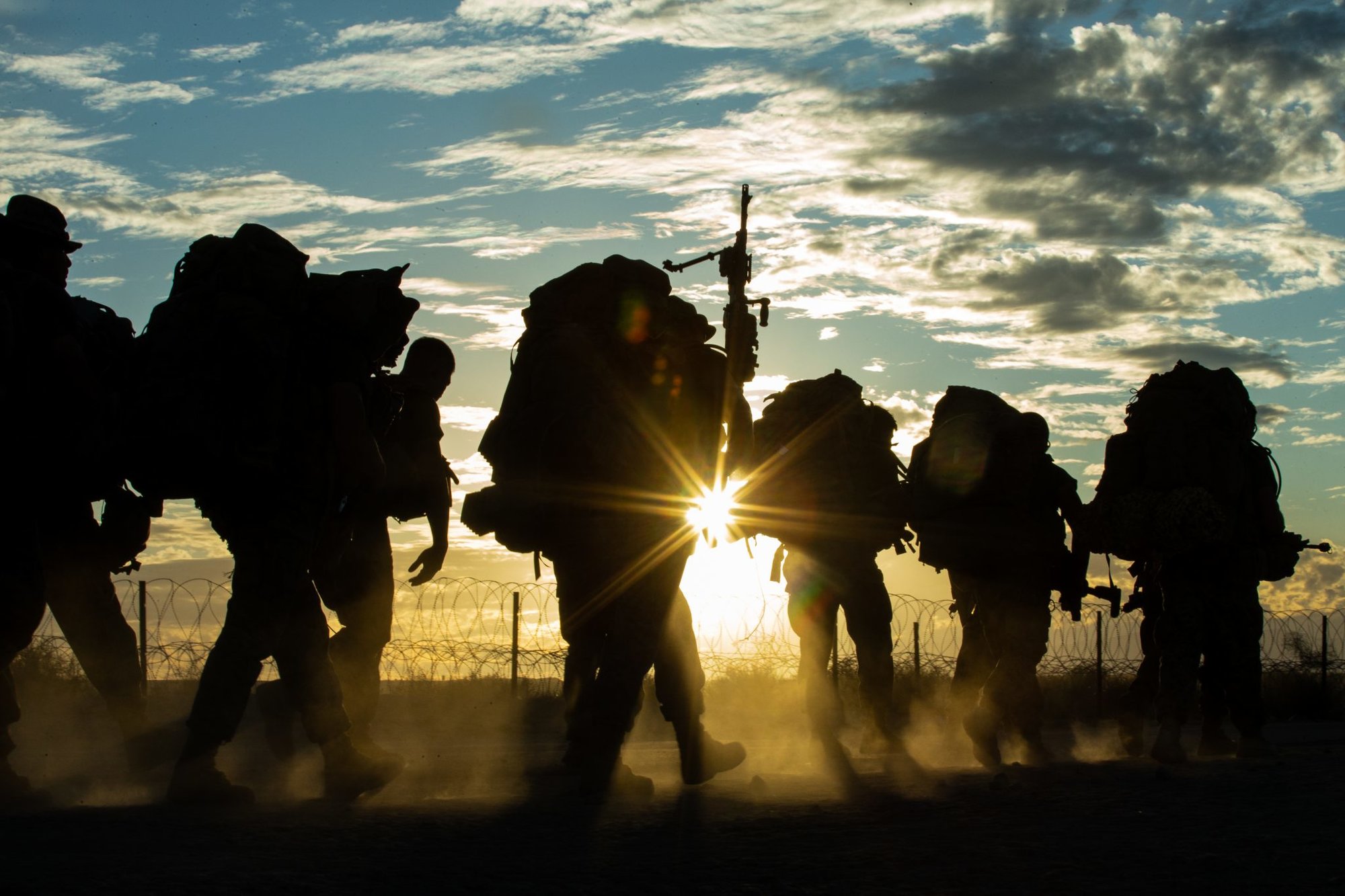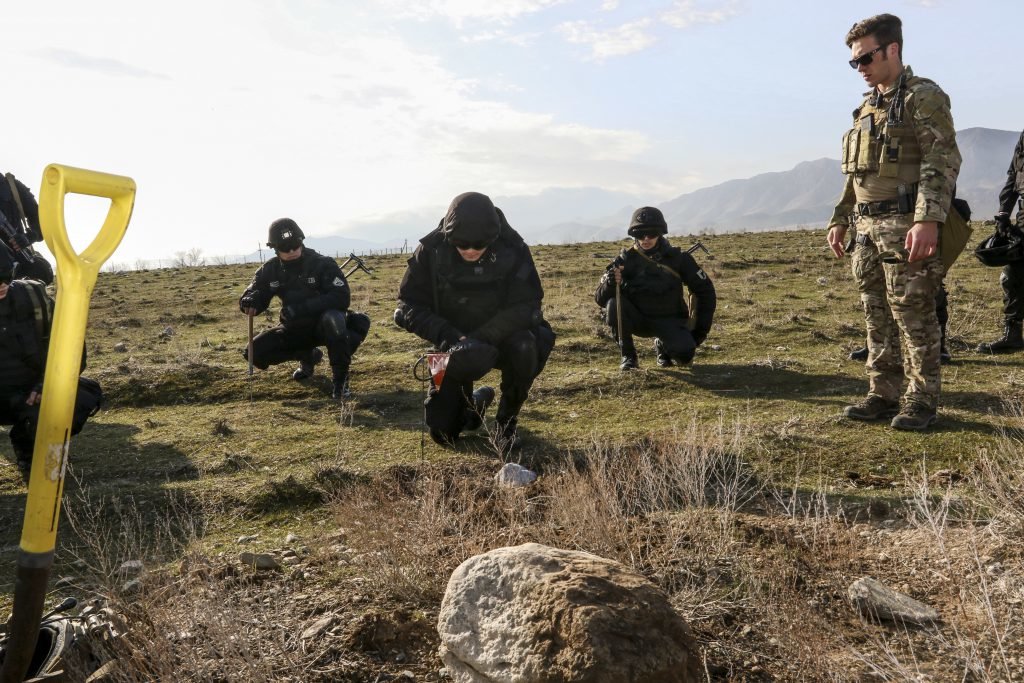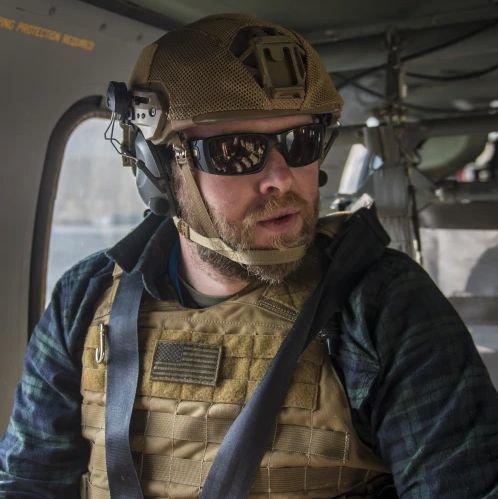The Surprising Reasons Most Troops Who Die in the Military Don’t Die in Combat

U.S. Marines with 7th Marine Regiment, 1st Marine Division conduct a hike on Camp Wilson, Marine Corps Air Ground Combat Center, Twentynine Palms, California, Nov. 2, 2019. U.S. Marine Corps photo by Pfc. Patrick King.
There are things that can annoy you during your time in uniform, like PowerPoint presentations, waiting to be released for the weekend, and that private who clearly needed a waiver to get in. Wait, that’s not a private, that’s a lieutenant!
And then there are things that can kill you.
The US military has been at war for nearly 20 years, and anyone who has wanted to test their mettle in combat has had the chance. Thanks to modern battlefield medicine and overwhelming fire superiority in most situations, American service members are coming home alive at rates that have never before been seen in the history of warfare.

Unfortunately, it’s not just bullets and IEDs that can — and do — kill our men and women in uniform. In fact, 74% of all US military deaths since 2006 have had nothing to do with combat.
1. Training. Train like you fight, fight like you train. It’s a good ethos to have in the business of war, but unfortunately, realistic training can have unintended consequences. Most recently, eight Marines and one US Navy sailor were killed when their Amphibious Assault Vehicle (AAV) sunk during training off San Clemente Island. This isn’t a common occurrence, but in 2017, 14 Marines and one sailor were hospitalized after their AAV hit a natural gas line. The last death occurred in 2011 after a Marine died while trapped in a sunken AAV in Oceanside Harbor.
Training accidents happen on land and in the air, too.

Between 2015 and 2018, the US Army suffered 14 fatalities from vehicle rollovers. That number spiked in 2019, with eight soldiers killed in rollover accidents. According to a US Army safety brief video, vehicle training accidents kill more on-duty soldiers than any other single reason, with inadequate unit driver training programs contributing to 68% of these mishaps.
Airborne operations are inherently risky and are considered the most dangerous training the military conducts on a regular basis despite rigorous risk mitigation procedures. So far in 2020, there have been at least two deaths, preceded by four in 2019. The fatalities affect conventional and special operations troops alike while conducting both static line and military free fall training across the US Army, US Navy, US Marine Corps, and US Air Force.
Training accidents are readily apparent in how they impact the force, while other issues are not so obvious — or forgivable.

2. Toxic exposure. Although burn pits have been reduced to an oft-joked about condition of wartime service, their impacts on service members who served overseas are real. Toxic exposure from burn pits is difficult to track, but one organization says they have recorded at least 130 deaths from the more than 250 burn pits that were used across Iraq and Afghanistan. Many compare the issue to how Agent Orange afflicted veterans of the Vietnam War. Like Agent Orange, the full effects of burn pits will likely take decades of research before it’s impact on veterans is fully understood.
If you’ve deployed to Afghanistan, you’ve probably heard about “Mefloquine Monday” and the nightmares it causes. Due to the areas of the world the US military regularly deploys to, a variety of malaria medications have been used for decades, with some having detrimental effects on service members. Mefloquine, in particular, was considered so dangerous that the FDA put a “black box” warning — its most strict measure — on the drug in 2013. It’s difficult to attribute how many deaths are a result of the drug, but the drug’s effects on the brain may be contributing to suicide rates.
Military housing has come under fire in recent years for failing to address issues ranging from black mold to lead poisoning and even asbestos poisoning. The problem affects everyone in the military umbrella, from junior enlisted soldiers in barracks to families living in on-base housing. Despite multiple lawsuits, the US military still grapples with some leaders not taking the issue seriously — even though it’s now affecting service members’ children.

Depleted uranium has also affected multiple generations of US military personnel, with many suffering through cancer and other afflictions after being exposed.
Most recently, government documents revealed that the military knew Uzbekistan’s K2 airbase was poisoning service members stationed there.
“Ground contamination at Karshi-Khanabad Airfield poses health risks to U.S. forces deployed there,” said the classified report obtained by McClatchy dated Nov. 6, 2001. According to a 2015 Army investigation, at least 61 service members have been diagnosed with cancer or died after serving there, but that number does not include special operations troops at the secretive base.
There are many organizations available to help service members who have been impacted by toxic exposures. Veterans who are experiencing unexplained health issues are encouraged to reach out for help.

3. Fort Hood. K2 isn’t the only base responsible for death in the military. Fort Hood is quickly becoming known as one of the most dangerous places to be stationed in the US Army after a rash of murders and busted prostitution rings have been exposed. Twenty-three soldiers assigned to the Texas base have died this year alone; only one of those deaths happened in combat. The murder and dismemberment of Spc. Vanessa Guillen thrust Fort Hood’s issues into the national spotlight this year, and now multiple investigations have been initiated to find answers about why the base has devolved.
4. Suicide. Suicide afflicts both active duty troops and veterans alike. Between 2006 and 2020, 4,231 active service members died of self-inflicted wounds. In 2017, 6,139 veterans committed suicide, according to the Department of Veterans Affairs. The reasons for taking one’s life vary, but over-prescription of opioids, toxic leadership, marital problems, and financial problems are all common reasons cited. Fortunately, the military has started to take the mental health crisis more seriously in recent years, with many senior leaders stepping forward to talk about their own struggles and encouraging troops to reach out for help if they need it.
Many of these issues can only be mitigated by calling out problems when they happen and being proactive about avoiding safety shortfalls. If you see something, say something. These problems won’t go away on their own.

Marty Skovlund Jr. was the executive editor of Coffee or Die. As a journalist, Marty has covered the Standing Rock protest in North Dakota, embedded with American special operation forces in Afghanistan, and broken stories about the first females to make it through infantry training and Ranger selection. He has also published two books, appeared as a co-host on History Channel’s JFK Declassified, and produced multiple award-winning independent films.
BRCC and Bad Moon Print Press team up for an exclusive, limited-edition T-shirt design!
BRCC partners with Team Room Design for an exclusive T-shirt release!
Thirty Seconds Out has partnered with BRCC for an exclusive shirt design invoking the God of Winter.
Lucas O'Hara of Grizzly Forge has teamed up with BRCC for a badass, exclusive Shirt Club T-shirt design featuring his most popular knife and tiomahawk.
Coffee or Die sits down with one of the graphic designers behind Black Rifle Coffee's signature look and vibe.
Biden will award the Medal of Honor to a Vietnam War Army helicopter pilot who risked his life to save a reconnaissance team from almost certain death.
Ever wonder how much Jack Mandaville would f*ck sh*t up if he went back in time? The American Revolution didn't even see him coming.
A nearly 200-year-old West Point time capsule that at first appeared to yield little more than dust contains hidden treasure, the US Military Academy said.












